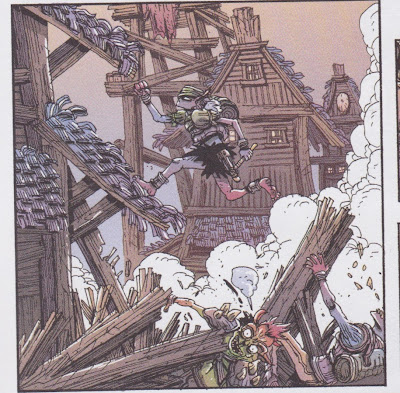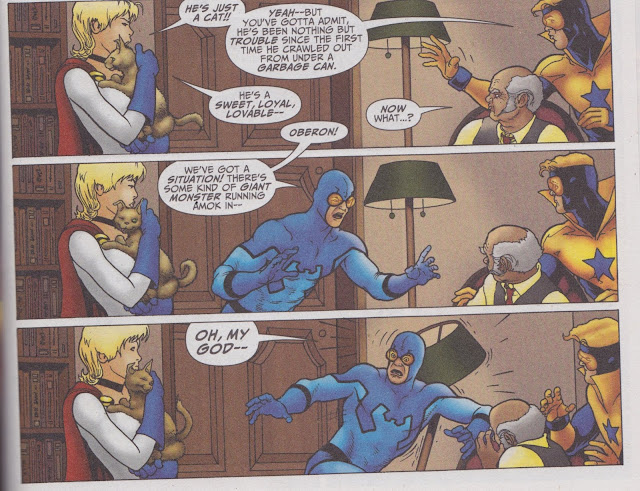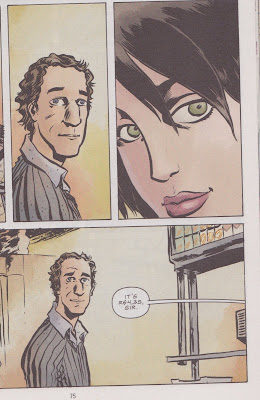Ah, Crossgen comics. I was a pretty big fan back in the day when the company seemed to be really taking off. Come to think of it, Crossgen is probably a big reason for why I became so interested in comics from all kinds of different genres. Each of their books took on a different one.
Scion, Meridian, Sojourn, Way of the Rat...these were comics that I really enjoyed, and they each did their own thing while sharing the thread of "the sigils." It's really too bad that the company imploded like it did.
Probably my favorite Crossgen series was Ruse by Mark Waid and Butch Guice. Simon Archard was a great detective figure and his partner Emma Bishop also made the stories memorable. Wait a moment--why am I speaking of this comic in the past tense? Thanks to Disney's corporate takeover of Marvel, and Disney's preceding purchase of the rights to all things Crossgen, Ruse is still in existence!
Marvel seems to be "testing the water" on the viability of the Crossgen properties with miniseries. From what I can gather, it looks like other minis are taking a whole new approach to the Sigilverse, but I am very hapy to report that Ruse hasn't missed a beat. This is Ruse Volume Two as far as I can tell.
How did they do it? Well, having Mark Waid back to writing about Archard and Bishop is probably the most essential part of it. Guice is back as well, though sadly only on the four covers of the original comics reprinted in this book. Would the book have been a little better with more involvement from the other 50% of the creative team that made Ruse 1.0 a sight to see ten years ago? Yes. Despite that, The Victorian Guide To Murder is a great continuation of a great comic that was an unfortunate casualty of an overly ambitious comic book company.
Just touching on Guice's replacements on art duties: Mirco Pierfederici handles the bulk of the work, and it's a little mysterious why the third issue has a different artist in Minck Oosterveer. Mirco has a great art style for the book and Minck's is good but a little more cartoony. It's a little jarring to go between the different styles, but the quality on all four issues is very high.
As to the story, Waid packs an amazing amount of twists and turns into a collection that doesn't even hit the one hundred page mark. Lightbourne, one of Archard's greatest enemies, is unleashing his most ambitious plot for power ever, and Archard just barely solves everything in time. The stakes are high and losses are taken, but Simon Archard and Emma Bishop are still standing by the end of it.
 |
| Where it all started in 2001. |
It's hard to decide which aspect of Waid's writing here is stronger. Is it the mystery/adventure plotline or the great characterization of Archard and Bishop? Their relationship is fresh; they are always arguing about how to go about their work while recognizing that they really do need to work as a team. There's no romance between them, and for all intents and purposes it appears that Simon Archard is not a man who has time for anything of that sort. They work together and Emma trusts him entirely, even when he sends her to be a fighter in an all-woman bloodsport. Archard's seemingly mad hunches do pay off, and by the way, Emma certainly holds her own in the ring.
After finishing the newest Ruse comics, I could only hope that there are more in the pipeline for 2012.
















































